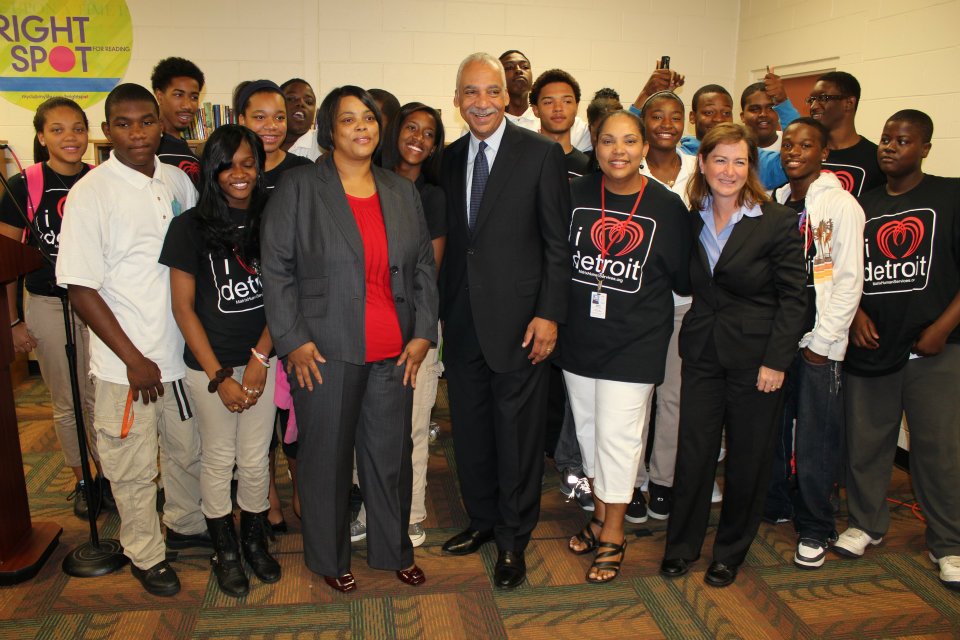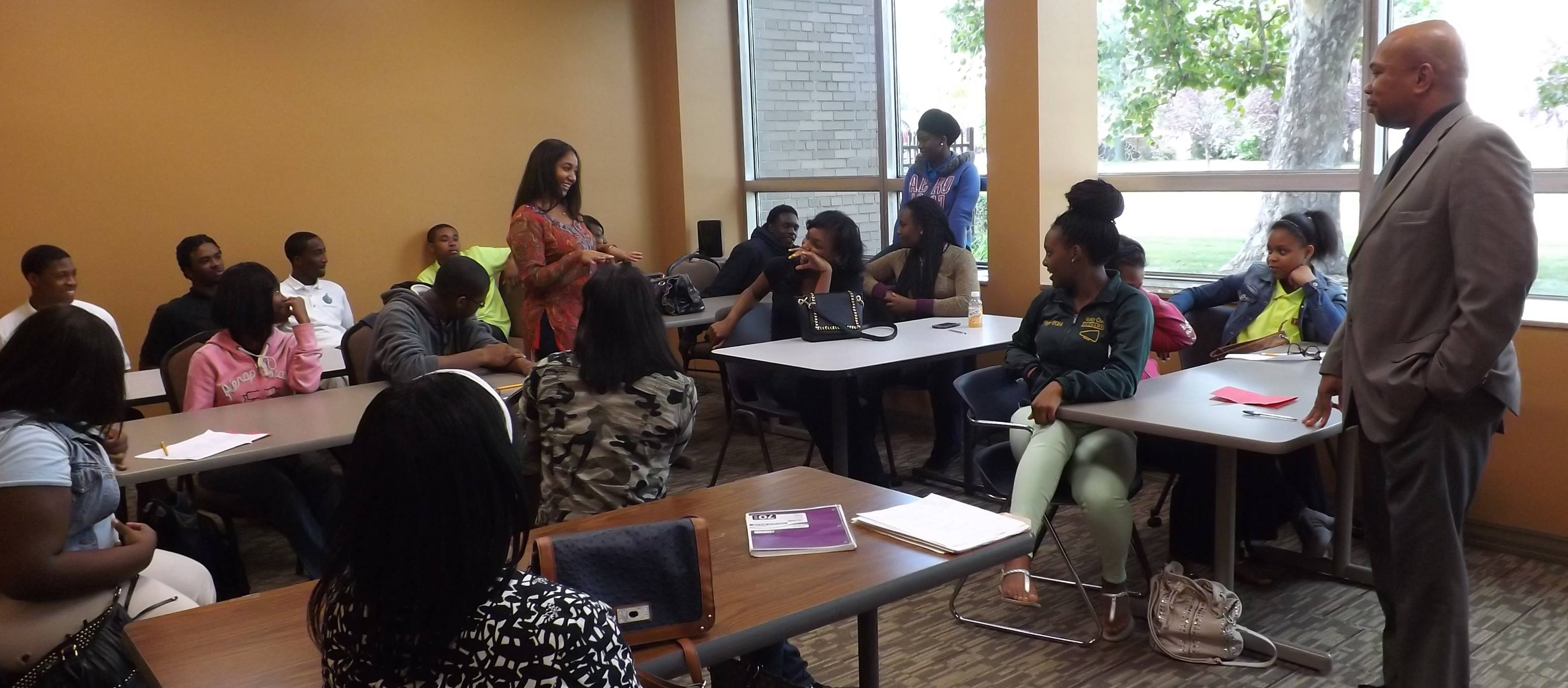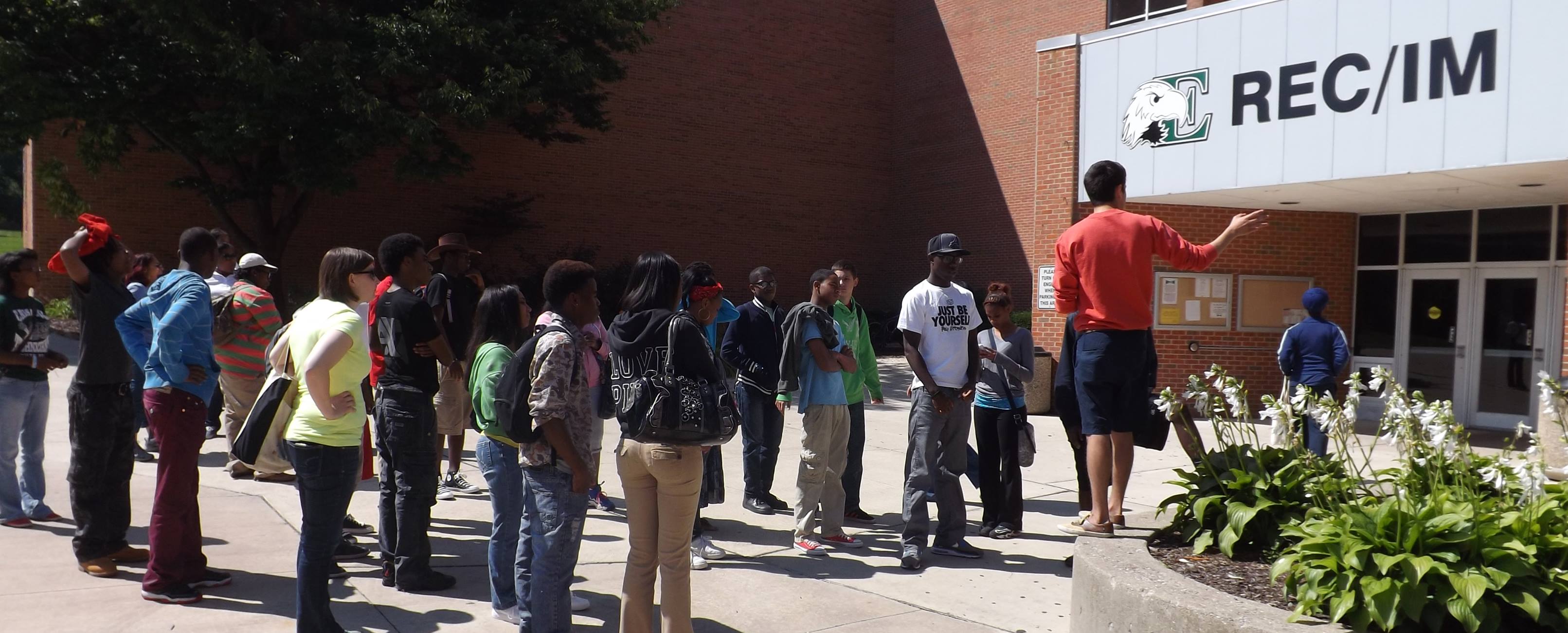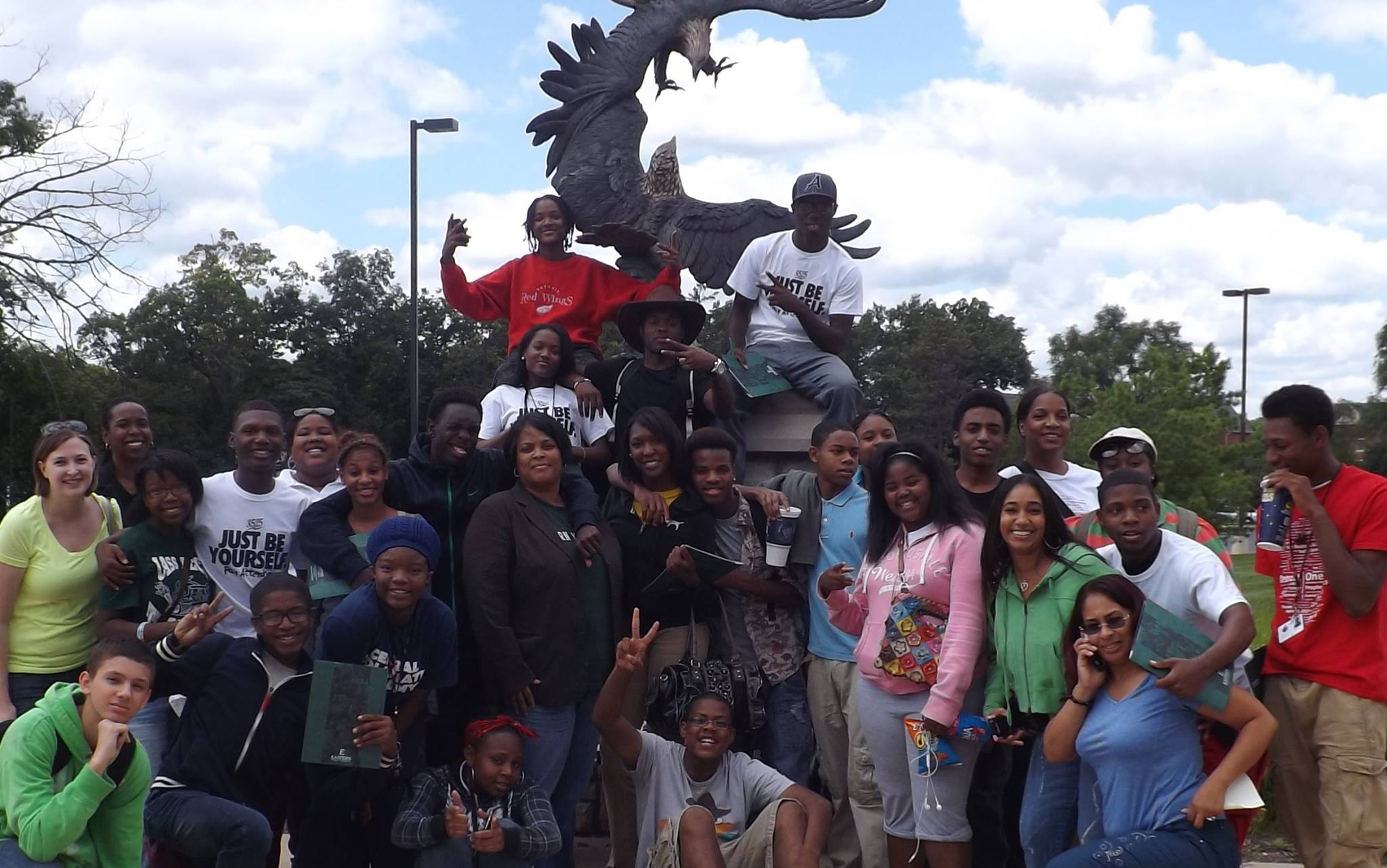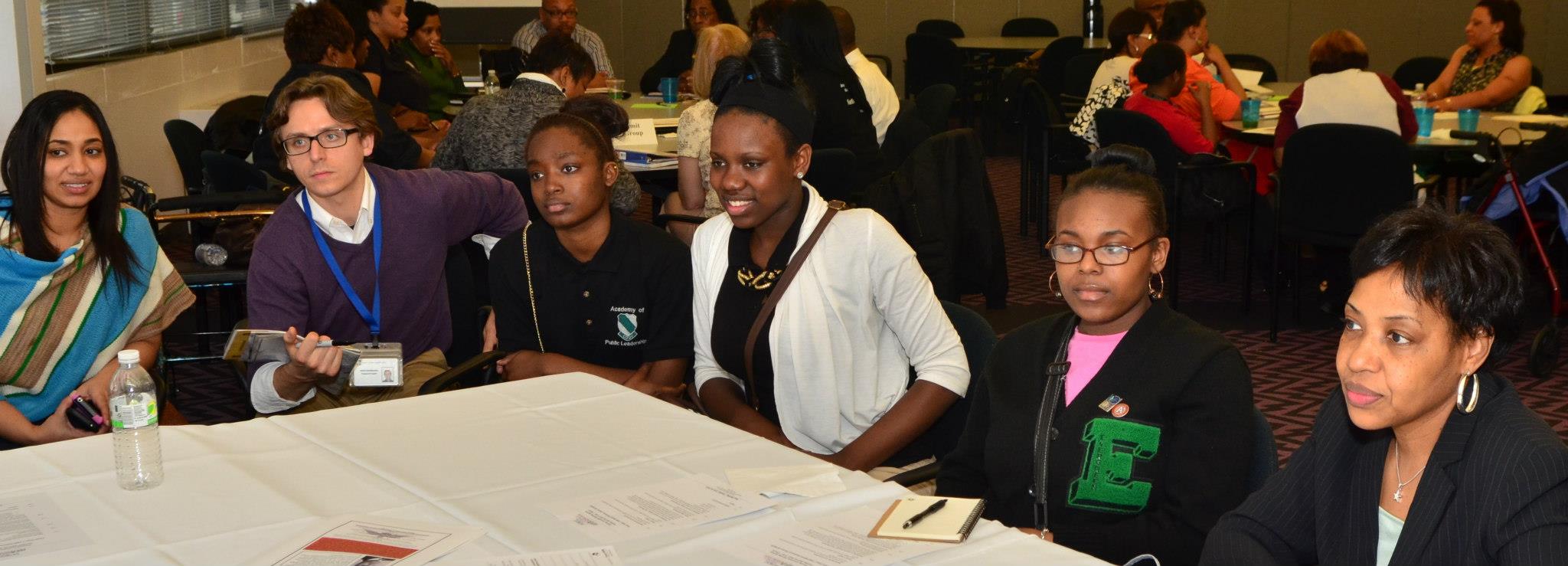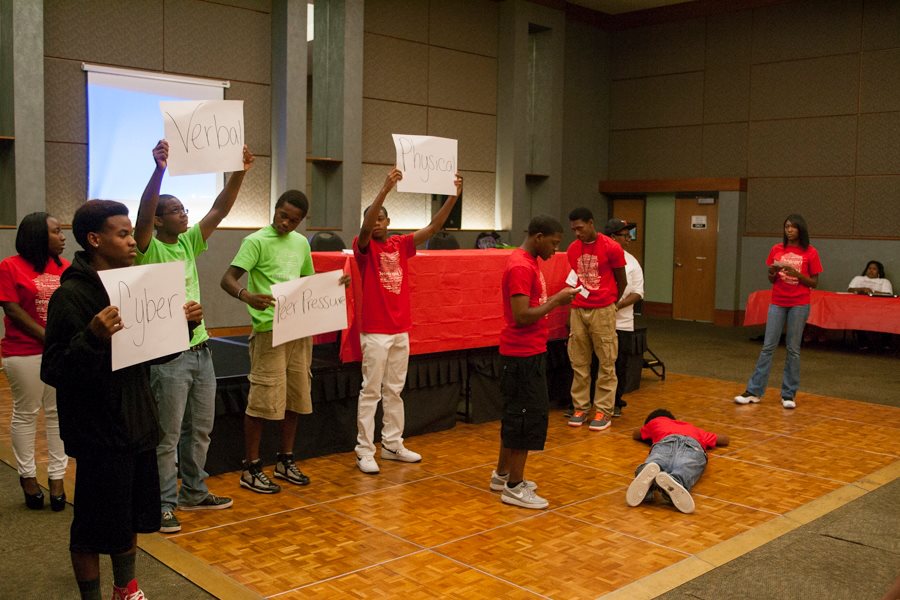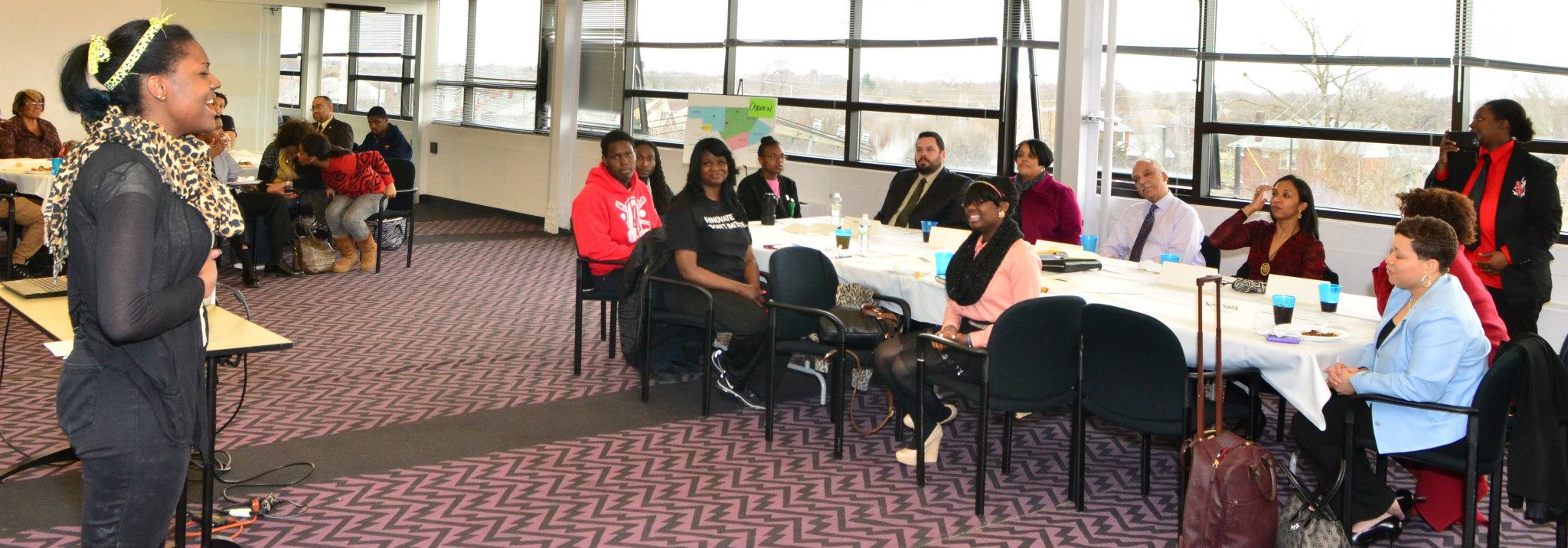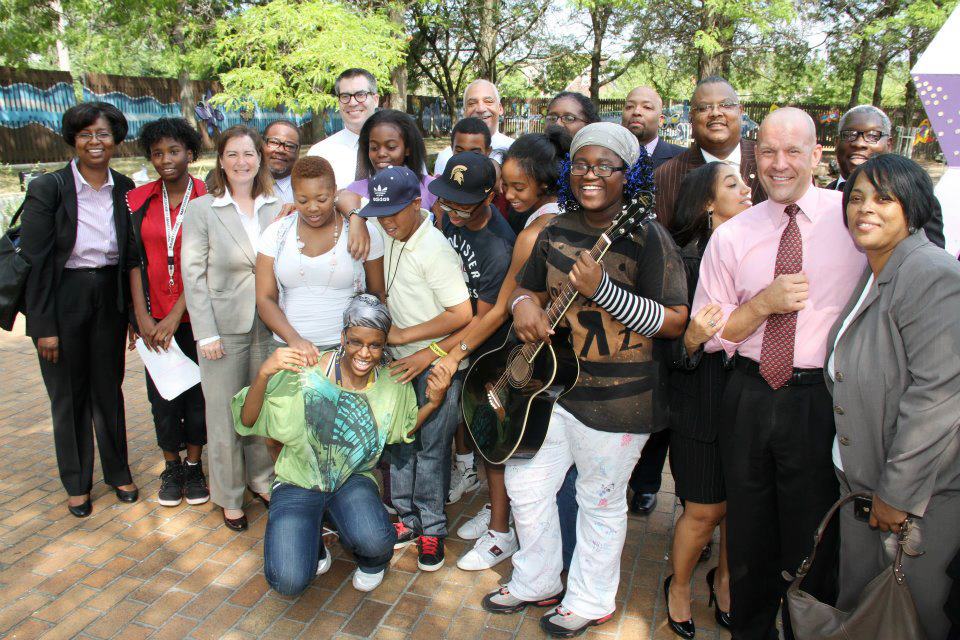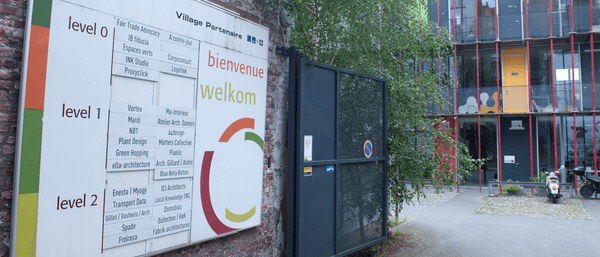The Detroit three-year Youth Violence Prevention strategy is a multi-layered strategic framework aligned with DOJ rubric of prevention, intervention, enforcement, and re-entry. This strategic framework encompasses systemic reform and work in pilot areas. Anticipated outcomes are reduction in youth violence in selected areas, followed by expanding efforts into additional neighborhoods using lessons learned from the initial pilot work. The heart of the pilot area strategy is to apply strategic principles to address “hot spots” where there are elevated youth violence incidents. The goals of the pilot area strategy are not only to reduce youth violence but also to build capacity and extract lessons to be utilized in expanding to other parts of the city. A steering committee identified two areas for initial effort, Osborn/Denby and Cody.
The steering committee SC is a cross-sector leadership group representing various constituencies and key organizations playing important roles in every facet of the violence prevention strategy. It has been meeting regularly since January 2011 to develop principles, select pilot areas, and plot strategy. SC, with membership augmented by business leaders and community leaders from pilot areas, will continue to guide youth violence prevention efforts. In addition, a data workgroup supports this effort. Led by the city’s principal epidemiologist, the team includes representatives from Detroit Police Department DPD, the Department of Health and Wellness Promotion, Data Driven Detroit, and the Skillman Foundation. Efforts to build specific strategies for each of the pilot areas will be anchored in a strategic principle of empowered communities. This is operationalized by creating Community Safety Teams.
Community Safety teams will bring together neighborhood leaders, service providers, and key city agencies including DPD and others to take responsibility for guiding work in their community. Teams will be supported by a full-time Youth Violence Prevention coordinator working out from the Mayor’s Office, possibly assisted by outreach workers with more of an on-the-ground presence. Teams using timely data will monitor youth and other violence in their community, advise on resource deployment, foster alignment, collaborate across existing efforts, and be a voice for stopping the violence.
Specific youth violence prevention strategies will be selected to complement existing efforts and draw from evidence-based practice. As mentioned above, these strategies will be guided by DOJ framework of prevention, intervention, enforcement, and re-entry; augmented by aspecial focus helping young people see a path to a career and purposeful life. Some efforts can be supported with existing funding, others will reflect grant applications in process, and some will require new funding.
As noted above, Osborn and Cody-Rouge are already home to a rich palette of youth development programs, recreational opportunities, training, and youth leadership programs. Additionally, the Skillman Foundation, working with community-based partners and Brandeis University, is developing systematic analysis of youth-serving efforts, which can be seen as a prevention strategy because this will help to identify gaps in further capacity building and investment. Stopping violence before it happens and providing constructive paths for those who are already gang-involved, or have had contact with the law serve as a foundation for intervention strategies.
The foundation for enforcement and re-entry strategies will be on existing efforts. It is expected that as Community Safety Teams develop strategies, further enforcement and re-entry strategies will be developed.

